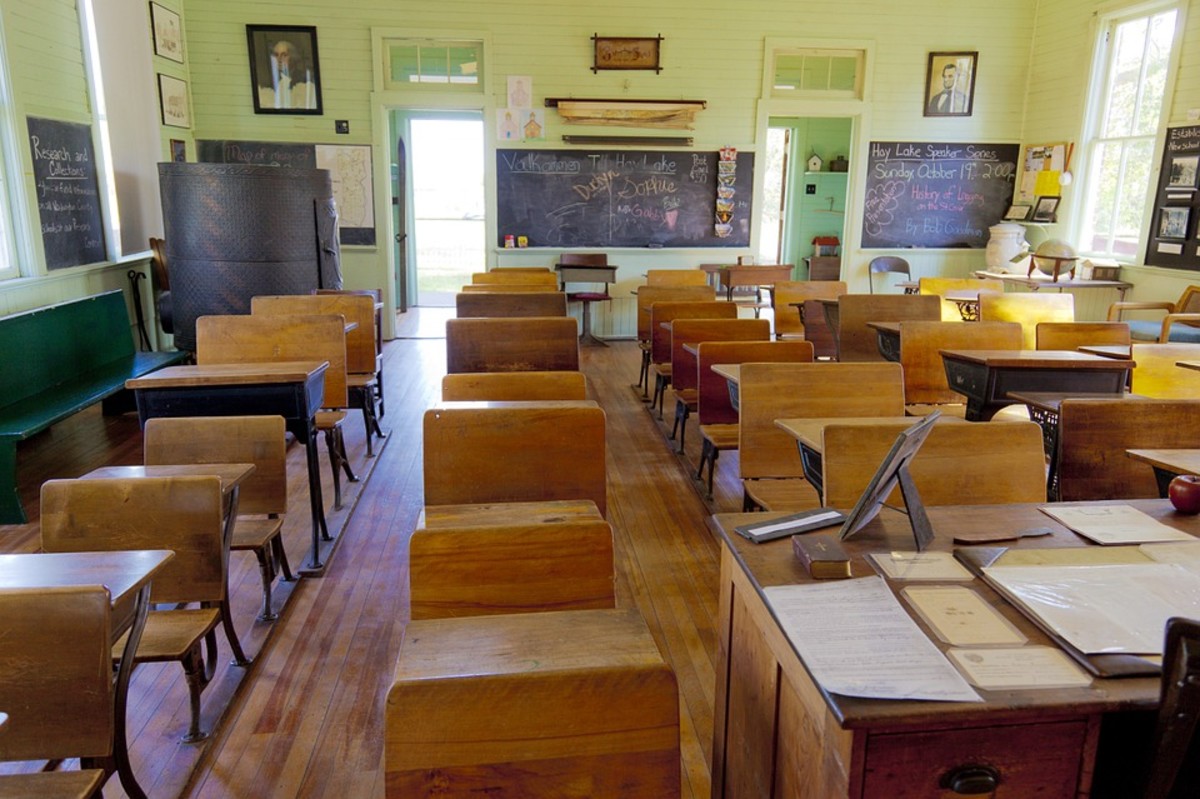School Health - The Importance of the School Nurse on Student Attendance and Academics

This article was completed by myself, as a requirement, for the BSN program through Jacksonville University.
The History of School Nursing
Abstract
All public school students deserve the best education possible. With budget cuts and fiscal tightening in our schools it is imperative that school nurses continue to show the positive impact their presence has on student health and therefore student attendance. Better attendance optimizes the potential for better education of our students. Is there sufficient research evidence to show a positive correlation between increased numbers of school nurse staff resulting in a positive impact on student attendance and academic achievement? Many studies have been reviewed concerning this important issue in nursing and public education.
The concept of school nurses came to life in 1902 after the failure of New York City Medical Inspectors to contain illness and decrease absenteeism in schools. The head of the board of education along with the city’s health commissioner approached Ms. Lillian Wald to assist them in coming up with a plan to remedy the situation. It was Wald who first proposed the idea of a new kind of public health nurse, the “school nurse” (Vessey, McGowan, 2006).
In October of that same year Ms. Wald assigned nurse Lina Rogers to a one month experimental position working with 10,000 students in four of New York’s poorest schools. It was up to Ms. Rogers to draft specific illness protocols, inspect sick children for contagious diseases, and conduct home visits for those too ill to remain in school. After one month on the job, the positive impact of the school nurse was so successfully pronounced that the New York City Board of Health hired twelve additional school nurses and appointed Ms. Rogers as the Superintendent of School Nurses (Vessey, McGowan, 2006). A powerful allegiance between health and education was born.
Today the role of school nurse is performed by more than 46,000 registered nurses nationwide according to the Bureau of Labor Statistics for 2005. Quite a leap from the original thirteen school nurses of 1902. The fact that the occupation of school nurse has continued for more than one hundred years is a testament to success. School nurses are making a positive impact on the educational well being of public school students in the United States (Vessey, McGowan, 2006).
Problem
School health services are not funded by consistent and reliable budget sources. There is not a mandated specific line item on the educational fiscal outline for nurses. Funding for the school nurse falls under the umbrella of “support staff” funding. This leaves the school nurse in a vulnerable position as to job stability and financial security. Without reliable fiscal backing school health services, particularly school nurses, will remain subject to political pull and budgetary restraints (Costante, 2001). School nurses must use research to continually link the connection between the presence of school nurses and student attendance and academic success.
Problem Statement
Does the availability of a school nurse have a positive impact on student attendance and academics in the public school setting according to current nursing research?
Hypothesis
The availability of a school nurse in the public school setting has a significant and positive impact on the attendance and academics of students; this impact is greater when there is a nurse available fulltime in every school.
Purpose of the Study
The purpose of this research review is to investigate the impact of an available school nurse on the student’s attendance and academic success in the public school setting. It is important to establish a firm link between the presence of school nurses in public schools and the corresponding student attendance and academic successes. The future of school nursing is dependent on this type of research.
Students in the public schools are presenting with more challenging health care needs at the same time the budget is being decreased for such services. School nurses must continue to pursue research quality data to corroborate the impact of the services they provide to public school students. Showing the connection between improved student health and school nurse presence; consequently leading to improved attendance and thus optimizing the students academic success will likely bring more funding to continue such positive trends.
Review of Literature
Student attendance is one of the main factors associated with improved academic success in public schools. According to the National Center for Health Statistics (NCHS) in 2004 only 26% of students aged 5 to 17 years old in the United States had missed zero school days of school, due to illness or injury, for the entire school year. This is an area where school nurses have the education and experience needed to make a noticeable difference. Analysis of data has shown that students who attend the majority of the scheduled school day are twice as likely to pass a language arts test as are students who attended only 85% of the school day (Wyman, 2005). Wyman’s research shows that unlicensed school support staff members sent home students who reported to the health room, due to illness or injury, at a rate of nearly 3:1 as compared to the number of students sent home after they had direct contact with a school nurse.
The methods used in Wyman’s study included the analysis of data using descriptive and correlational statistical methods. A convenience sample of six schools, two elementary, two middle schools, and two high schools were used. Randomized sampling was not used in an effort to control the extraneous variables related to the diverse school system. This study shows significant differences in the number of students sent home early either ill or injured by non-nursing verses nursing staff. The total number of students sent home early in a sixteen day period after contact with the school nurse was fifty eight. The total number of students sent home early in the same sixteen day period without school nurse contact was one hundred sixty seven (Wyman, 2005).
The National Association of School Nurses (NASN) states the role of the school nurse should be geared towards promoting student health resulting in better academic success. NASN also recommends a school nurse to student ratio of 1:750 respectively. Research has shown that nurses are more likely to use interventions that facilitate health promotion and disease prevention activities than are nonlicensed school staffs (NASN, 2004). Yet the majority of public schools do not consistently follow this ratio recommendation. According to statistics from 21 counties in North Carolina only eight of the 117 school districts in that state meet this ratio (Guttu, Engelke, Swanson, 2004). Though statistics are not available for all states at this time the general consensus is that most states do not comply with the NASN recommendation on ratios.
Another avenue of garnering support for more school nurses is the surveying of nonlicensed school staff. The School Nurse Impact Committee of Columbus Ohio conducted this type of study. The goal being to determine the level of staff satisfaction with the delivery of health services by the school nurses in the district. The data also included analysis of the impact of school nurses on student attendance on a daily basis. The theory being that increased nurse time in a school building would increase the staffs’ positive perceptions and their satisfaction grade for the school nurses. School nurses need the support of nonlicensed colleagues when bargaining for better nurse to student ratios. The staff comments included “Nurses should administer medications at school, not secretaries and record clerks” and “Each school should have a nurse on site everyday” (Winland, Shannon, 2004, p. 104). School staffs view the school nurse as a necessary and valuable asset to both staff and students (Winland, Shannon, 2004).
Research to determine the effects of a full time nurse versus a part time nurse in the elementary school setting correlates the theory behind NASN’s recommendation of a 1:750 nurse student ratio. This study looked at students with asthma, which is the leading cause of absenteeism in the U.S., to determine whether the availability of a school nurse five days a week versus two days a week made an impact on absentee rates. Sixteen elementary schools in the Midwest participated in this study. Eight of the schools had a part time school nurse who was available two days of the week and eight had a full time school nurse available for all five days of the week. Data was analyzed using independent sample t -tests, ANOVA’s and Chi-square calculations to assess differences with the student absentee rate based on nurse availability. Values for p were set at .05. The results of this study show that students with asthma missed 23% fewer days when there was a fulltime school nurse available than did a similar group of students with asthma when there was a part time school nurse available (Telljohann, Dake, Price, 2004).
It is estimated that 15% of school students have some type of chronic health condition which would benefit from regular contact with a school nurse. When the ratio of school nurse to students is poor, the nurse does not have the time or resources to survey each student looking for a chronic health condition. With better school nurse to students’ ratios the nurse is more likely to identify these students and incorporate a plan of care possibly leading to higher attendance rates and therefore greater academic success. Further estimates indicate that 10 to 31% of injuries to students’ happen on school property. The availability of a school nurse to assess, track, and then look for patterns may lead to corrections and a safer school environment for the students (Guttu, Engelke, Swanson, 2004).
A study was conducted of frequent visitors to the school nurse’s office at two middle schools in Massachusetts. The majority of the frequent visitors to the nurse’s office complained of symptoms consistent with anxiety and stress such as headaches, stomach aches, dizziness, chest pain, sweating, pallor, and crying. There were more of these types of visits on Mondays, Tuesdays, and Fridays. Lunch time had the highest incidence over any other time of day. The study conclusions included the importance of the school nurse in decreasing the absenteeism of these students. The school nurse’s office is often viewed as a safe haven for anxious students. The school nurse is often able to offer comforting words and patient understanding to the student. This reassurance from the nurse coupled with a brief period of relaxation often enables the student to return to class and complete the school day. Another example of the important contribution that school nurses can make for the student (Sweeney, Sweeney, 2000).
Student absenteeism whether it be due to illness, injury, or any multitude of other reasons is a huge time wasting factor for teachers and also adds tremendous cost for the school districts. Teachers must repeat the curriculum material for absent students so that missed work can be caught up. Some districts employ assistant principals who spend half of their working hours tracking absenteeism and looking for ways to decrease the loss of revenue associated with a higher rate of absent students (Weller, 2000).
In this time of ever increasing financial woes in the education system it is most important for school nurses to embrace theoretical frameworks for guidance and to educate the public on what school nurses do and why they do it. Additionally school nurse theories can assist with showing the difference in student attendance and academics that occurs in relation to a sufficient number of school nurses. With so much focus on evidenced based care school nurses have significant pressure and responsibility to show their positive impact on the students’ attendance and academics to ensure that administrative leaders can be made aware of this important aspect of education.
School nurses can use the theoretical framework of Maslow’s hierarchy of needs to show the theories behind the care they provide and why it makes a positive impact. Maslow’s theory is based on human practicality. Maslow bases his method of thinking on the human physiological and psychological needs. The first of these human needs being the physiological needs of air, water, nutrients, and thus good health. Maslow makes it clear that if these physiological needs are not met the human being will not be able to rise above this level of basic needs, their focus will remain aimed at taking care of these needs and no other need will matter. (Benson, Dundis, 2003). The school nurse can justify that if a student is not physiologically well then they will not be able to move on to their educational responsibilities as physiological needs take precedence over all other needs.
Nursing Implications
All public school students deserve the best education possible. With budget cuts and fiscal tightening in our schools it is imperative that nurse researchers continue to show the positive impact that school nurse presence has on student health and therefore student attendance. Better attendance optimizes the potential for better education of our students.
School nurses play a vital role in the assessment of illness and injury in students. School nurse staffs are professional and knowledgeable about health needs which leads to less absenteeism for students. School nurses are a vital part of each student’s education, leading to less absenteeism and more learning time. School nurses must use this type of research to further link the connection between school nurses and student success.
This content is for informational purposes only and does not substitute for formal and individualized diagnosis, prognosis, treatment, prescription, and/or dietary advice from a licensed medical professional. Do not stop or alter your current course of treatment. If pregnant or nursing, consult with a qualified provider on an individual basis. Seek immediate help if you are experiencing a medical emergency.
© 2012 Sheila








